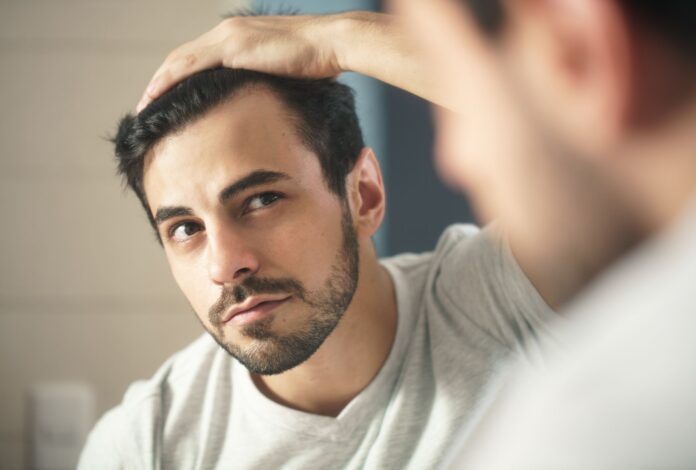Hair loss, also known as alopecia, is a common concern for both men and women. It can be a distressing experience, as our hair plays a significant role in our appearance and self-confidence. Understanding the causes, symptoms, and treatment options for hair loss can help individuals cope with this condition and regain control over their self-esteem. In this article, we will discuss the various types of hair loss, common causes, symptoms, and the most effective treatments available today.
Types of Hair Loss
There are several types of hair loss, each with unique characteristics:
- Androgenetic alopecia: Commonly known as male-pattern or female-pattern baldness, this is the most prevalent type of hair loss. It is a hereditary condition and typically involves a receding hairline and thinning of hair in both men and women.
- Telogen effluvium: This is a temporary hair loss condition often caused by stress, hormonal imbalances, or certain medications. It results in excessive shedding of hair, but generally resolves within a few months.
- Alopecia areata: This is an autoimmune disorder that causes hair to fall out in small, round patches. It can affect people of any age and is often triggered by stress or illness.
- Traction alopecia: This type of hair loss occurs due to prolonged tension on the hair, such as from tight hairstyles like braids or ponytails. Over time, this tension can lead to permanent hair loss.
- Cicatricial alopecia: Also known as scarring alopecia, this is a rare condition where hair follicles are destroyed by inflammation, leading to permanent hair loss.
Causes of Hair Loss
Hair loss can be caused by various factors, including:
- Genetics: A family history of hair loss increases the likelihood of experiencing it yourself.
- Hormonal changes: Pregnancy, menopause, and hormonal imbalances can lead to temporary hair loss.
- Medications: Certain drugs, such as chemotherapy, blood thinners, and antidepressants, may cause hair loss as a side effect.
- Nutritional deficiencies: A lack of essential nutrients, particularly iron and protein, can result in hair loss.
- Stress: Both physical and emotional stress can trigger hair loss, as it disrupts the hair growth cycle.
Symptoms of Hair Loss
The most common symptoms of hair loss include:
- Gradual thinning of hair on the top of the head
- Receding hairline, particularly in men
- Sudden loosening of hair, resulting in handfuls of hair coming out when combing or washing
- Patchy or circular bald spots on the scalp
- Full-body hair loss, often due to medical treatments like chemotherapy
- Patches of scaling, redness, or inflammation on the scalp, which can indicate an underlying skin condition
Treatment Options
There are several treatment options available for hair loss, including:
- Medications: Over-the-counter and prescription medications, such as minoxidil (Rogaine) and finasteride (Propecia), can help slow hair loss and promote regrowth in some cases.
- Hair transplant surgery: This involves transplanting hair follicles from one part of the scalp to the balding area, providing a long-lasting solution for some individuals.
- Laser therapy: Low-level laser therapy can help stimulate hair growth by increasing blood flow to the hair follicles.
- Corticosteroid injections: For cases of alopecia areata, corticosteroid injections can help reduce inflammation and promote hair regrowth.
- Lifestyle changes: Maintaining a balanced diet, reducing stress, and using gentle hair care practices can help minimize
- Platelet-rich plasma (PRP) therapy: This treatment involves injecting the patient’s own platelet-rich plasma into the scalp to stimulate hair growth by promoting cell regeneration and blood flow to the hair follicles.
- Topical treatments: Some individuals may benefit from topical treatments, such as essential oils, that can promote hair growth and improve overall scalp health.
- Wigs and hairpieces: For those experiencing significant hair loss, wigs and hairpieces can provide a temporary or long-term solution to improve appearance and self-confidence.
- Scalp micropigmentation: This is a non-surgical treatment that involves tattooing tiny dots on the scalp to create the illusion of a fuller head of hair.
- Alternative therapies: Some individuals may find relief with alternative therapies such as acupuncture, herbal supplements, or scalp massage, although more research is needed to confirm their effectiveness.
Prevention Tips:
While not all types of hair loss can be prevented, there are steps you can take to maintain healthy hair and minimize the risk of hair loss:
- Maintain a balanced diet rich in vitamins and minerals, particularly iron, zinc, and biotin.
- Avoid tight hairstyles that can cause tension on the hair, leading to traction alopecia.
- Limit the use of harsh chemicals and heat-styling tools on your hair.
- Practice stress-reduction techniques, such as meditation, yoga, or regular exercise.
- Be gentle when brushing or washing your hair, and avoid excessive pulling or tugging.
Conclusion
Hair loss is a common concern that affects millions of individuals worldwide. Understanding the various types, causes, and treatments can help those experiencing hair loss make informed decisions about their care and regain control over their self-esteem. If you are concerned about hair loss, it is essential to consult with a healthcare professional or a dermatologist to determine the most appropriate course of action for your specific situation.
